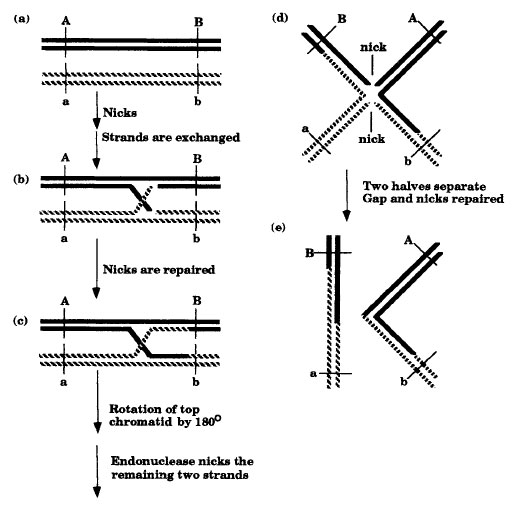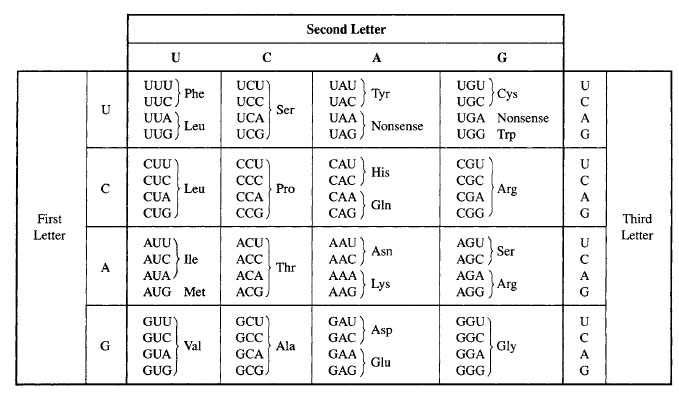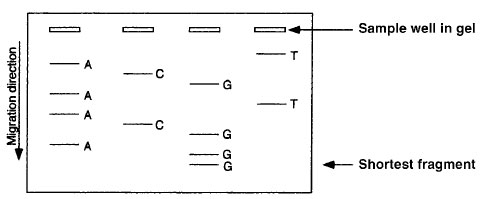FAQs in Cell Biology
Aside from DNA and certain associated proteins in chromosomes, what macromolecular aggregates are shared by all prokaryotes and eukaryotes?Both prokaryotic and eukaryotic cells possess a lipid plasma membrane that separates a cell from its environment. In addition, all cells have ribosomes, made partly of protein and partly of ribonucleic acid (RNA) molecules. Ribosomes function in the synthesis of proteins.
How are chloroplasts and mitochondria structurally similar?
They both are surrounded by an inner and outer membrane, a means for increasing the area of their membrane systems, contain their own circular chromosome, and have their own ribosomes.
Why can't H2S or NH3 act as terminal electron acceptors in anaerobic respiration?
H2S and NH3 are both already completely reduced.
What would you expect to happen if a facultative anaerobe were grown in the presence of oxygen and glucose?
If oxygen is present for aerobic respiration, fermentation essentially ceases, the rate of glucose consumption decreases, and the rate of acid and/or alcohol production is inhibited. This phenomenon is known as the Pasteur effect.
What occurs in meiosis, but not mitosis?
Synapsis, crossing over, and separation of homologous chromosomes happen during meiosis, but not mitosis.
What is the composition of starch? How is it digested?
Starch is a homopolymer of glucose units joined in α(1→4) and α(1→6) linkages. During digestion by enzymes such as salivary and pancreatic amylases, starch is hydrolyzed to maltose and glucose. Maltose is a disaccharide of two glucoses units joined by an α(1→4) link that can be cleaved by the enzyme maltase to yield two glucose molecules.
Would you expect certain amino acids to have a preferential location within a protein?
The ionized side chains of some amino acids readily interact with water (hydrophilic). Hydrophobic amino acids contain nonionized side chains that prefer to avoid contact with water. Thus, when a polypeptide chain folds into a globular tertiary shape, amino acids with hydrophilic groups tend to predominate on the outside of the molecule and hydrophobic segments of the chain tend to predominate in the interior of the molecule.
How do RNA molecules structurally differ from DNA molecules?
RNA contains uracil rather than thymine, has ribose rather than deoxyribose as the pentose sugar, and is usually single-stranded, whereas DNA is usually double stranded.
How does DNA replication differ between eukaryotes and prokaryotes?
The basic mechanisms of prokaryotic and eukaryotic DNA replication are similar. However, eukaryotes have numerous linear chromosomes, each with many oriR sites, whereas prokaryotes have only one replication origin on a single circular chromosome. Eukaryotes have more DNA polymerases than prokaryotes. Different proteins bind to the origins to initiate unwinding of the DNA prior to replication.
 |
| Figure 3-4 General recombination and the formation of a Holliday intermediate. |
If the GC content of a DNA molecule is 48%, what are the percentages of each of the four nucleotides?
Since each G hydrogen bonds with a C on the complementary strand of double-stranded DNA , then G=C. Thus, if the GC content is 48%, the G content must be 24% and the C content must be 24%. This leaves 52% for A and T, which must be 26% each.
Why regulate operon induction?
If biosynthesis were unregulated, a cell would rapidly fill with mRNAmolecules and enzymes whose activities may be unnecessary for cellular function at that time. This would be wasteful and counterproductive since the synthesis of these molecules requires a lot of energy which could be better spent in making repairs or for cell reproduction.
How would mutations in the controlling sites affect an operon?
In the lactose operon, mutations in lacO have been discovered that alter repressor binding. These operator mutations, symbolized lacOc, result in constitutive expression, even in the absence of inducer. Mutations in the lacCRP site which eliminate CRP binding reduce the expression of the operon. Mutations in the lacP1 site have been discovered that reduce the expression by reducing RNA polymerase binding to lacP1.
Distinguish between introns and spacer DNA .
In more complex eukaryotes such as humans, it is estimated that over 95% of the genome consists of noncoding DNA . Much of the noncoding DNA is found between genes. This is referred to as spacer DNA . Introns are located within genes and are transcribed by RNA polymerase. They are later removed and the exons (coding regions) are spliced together to produce the final mRNA.
Describe several characteristics of the genetic code.
The genetic code is triplet, meaning three nucleotides specify one amino acid. It is nonoverlapping, meaning three nucleotides are read, then the following three, and so on. The code is degenerate; more than one codon may encode the same amino acid. Lastly, it is universal; the same code is used in all living organisms, from bacteria to plants to animals.
List the components of the prokaryotic translation initiation complex.
The prokaryotic translation initiation complex includes the 30S ribosomal subunit, fMet-tRNAfMet, mRNA, 50S ribosomal subunit, protein initiation factors, and guanosine triphosphate (for energy).
Are transcription and translation in eukaryotes coupled as they are in bacteria?
No. In bacteria, as soon as the 5' end of a bacterial mRNA is transcribed, ribosomes can attach and begin translation. However, in eukaryotes, the primary transcript must be processed into a functional mRNA molecule and then must be transported from the nucleus to the cytoplasm before translation can begin.
What amino acid sequence is encoded by the following mRNA?
5' GGAUGGAUUUUAAGUGAAG 3'
First you must find the start codon to set the reading frame. Then, set apart the codons in triplets. Use Table 5.1 to decipher the amino acid sequence.
 |
5' GG AUG GAU UUU AAG UGAAG 3' met-asp-phe-lys-STOP
What would the result be if an adenine underwent a tautomeric shift as the DNA molecule was being replicated?
A cytosine would be incorporated into the new copy strand rather than a thymine. The other template strand, when replicated, will exhibit normal base pairing. When the DNA molecule with the mispaired region is replicated, a perfectly matched mutant DNA molecule will result and a G-C pairing will appear where an A-T was before.
Distinguish between the resulting gametes from nondisjunction during meiosis I or II.
If nondisjunction occurs during meiosis I, homologous chromosomes will fail to separate. Half of the resultant gametes will be n-1 and half will be n+1. However, if nondisjunction occurs during meiosis II, sister chromatids fail to separate. Half of the resultant gametes will contain a normal number of chromosomes, and �/4 will be n-1 and �/4 will be n+1, with identical sets of alleles on the duplicated chromosome. Solved Problem 6.3 Classify the following mutations:
(1) A→T; (2) C→T; (3) AGA→UGA; (4) AGA→CGA; and (5) AGA→AAA.
(1) transversion; (2) transition; (3) nonsense; (4) silent; and (5) sense.
What mechanism of genetic exchange could not occur in a culture medium containing DNA ?
Transformation could not occur, since it depends on the uptake of free DNA in the immediate environment.
Can virulent phages assume a prophage state?
No. Only lysogenic viruses can assume a prophage state, that is, a state where the viral genome is inserted into the host chromosome. By definition, virulent phages undergo the lytic cycle.
How many fragments would be generated by a restriction endonuclease in a plasmid that has two recognition sequences?
Because plasmids are circular molecules, two fragments would be generated. However, if the DNA were linear and contained two recognition sequences, three fragments would be generated.
Suppose the restriction endonuclease HindIII cuts a 6.0 kb linear piece of DNA into two fragments; an 800 bp fragment and a 5200 bp fragment. NarI cuts the DNA also into two fragments; fragments 1200 and 4800 bp long. Relative to the HindIII cut site, there are two possible ways in which NarI could have cut the DNA . How can you determine the correct cleavage site for NarI with respect to HindIII?
To determine this, one must subject the DNA to a double digest in which both the enzymes are allowed to cut the DNA at the same time. When the double digest is allowed to take place, if the three fragments that appear upon electrophoresis of the restricted DNA are 400, 800, and 4800 bp, then the only possible way in which the data can be interpreted is with the 1200 bp NarI fragment containing the HindIII recognition site 800 bp from the end of the linear piece of DNA . If the 4800 bp NarI fragment contained the cut site, you would visualize fragments of sizes 800, 1200, and 4000 bp after electrophoresing the doubly digested DNA .
What components would one need to add to a PCR reaction?
In a typical PCR assay, an excess of primers, nucleotide triphophates, target DNA , a thermostable DNA polymerase, and a buffer containing appropriate salts and ions are added.
What is the sequence of the template strand used to generate the following autoradiograph by the Sanger method of DNA sequencing?
 |
Reading from the bottom upward, the sequence represented on the gel is 5'-GGAGCATAGCAT-3'. Thus, the complementary sequence on the template would have been 5'-ATGCTATGCTCC-3'.
Which DNA hybridization assay format is most useful when one wishes to: (1) detect the presence of a pathogen's DNA in an aqueous clinical sample; (2) detect the presence and location of a gene segment in a restriction digest of genomic DNA ; and (3) detect the presence and localization of a pathogen's DNA within a cell?
The most useful assay formats would be (1) dot blot; (2) Southern blot; and (3) in situ hybridization.
Describe the capsid of an icosahedral virus.
Icosahedral virsues have a capsid with 20 triangular faces, 12 vertices, and 30 edges. The simplest icosahedral viruses have faces composed of three capsomeres. Such a capsid has a total of 60 capsomeres. Many viral capsids with more than 20 faces but having icosahedral symmetry are also referred to as icosahedrons.
True or false? (1) Single-stranded +RNA viruses usually engage in translation before they transcribe. (2) Retroviruses are single-stranded +RNAviruses, and they carry a DNA polymerase that can only use DNA templates. (3) Generally, viral adsorption is mediated by lipid attachment sites in the virus and lipid receptors on the host cell.
(1) True. (2) False, the DNA polymerase reverse transcriptase can use either RNA or DNA as a template. (3) False, adsorption is mediated by protein attachment sites/protein receptors.
What are GAPs and GNRFs? What are their roles in cellular communication?
GAPs are GTP-activating proteins that inactivate Ras. GNRFs are guanine nucleotide release factors that stimulate Ras. Ras proteins are monomeric G protein intermediates in signal transduction pathways which involve numerous phosphorylation events.
How do signal transduction pathways become permanently altered and cells become transformed in the absence of viruses?
Spontaneous mutations in various proto-oncogenes can convert them into oncogenes that may affect signal transduction pathways. Some mutations make signal transduction proteins nonfunctional, whereas others modify those domains inolved in protein regulation so that the signal transduction proteins are permanently in the active state. Cells that produce signal transduction proteins that are always active behave inappropriately. They may cause the cell to repeatedly progress through successive cycles. Mutations in the proteins that negatively control signal transduction may also lead to cellular transformation.
Once a cell has acquired a mutation in a proto-oncogene or tumorsuppressor gene that stimulates the cell's proliferation, secondary mutations in other proto-oncogenes or tumor suppressor genes occur that deregulate cells in the mutant population. These secondary mutations promote the survival and proliferation of many types of deregulated cells.
Would you imagine introns are relatively new features of genomes or that they were present in early forms of life?
Today introns are abundant in genomes of vertebrates, less frequent in lower eukaryotes, and absent from all common bacteria. But if introns were present in primitive genomes, most bacteria and relatively simple eukaryotes might have lost them under selection pressure to streamline their genomes for more rapid reproduction at lower energy expenditure. If, on the other hand, introns were not present in early genomes, but were inserted by recombination mechanisms into more advanced genomes, the simpler organisms may have resisted this process. However, random insertion events would most likely destroy the encoding of essential amino acids, rather than preserve them. Analysis of ancient, ubiquitous, highly conserved proteins may help resolve this problem.
What are the advantages of using nucleotide sequences in constructing phylogenies rather than amino acid sequences?
Nucleotide sequencing is much faster and less expensive than peptide sequencing. Even tiny amounts of DNA in fossils over 100 million years old have been successfully sequenced by using PCR to amplify the DNA . There is no comparable method for multiplying tiny bits of polypeptides to levels needed for sequencing.
In addition, DNA sequences can reveal silent mutations, whereas protein analyses cannot. Furthermore, DNA analyses are not restricted to sequences coding for proteins, but can also be used for genes that encode tRNAs and rRNAs, as well as noncoding control sequences, introns, spacers, or any part of the genome.
What function does a nuclear membrane serve that would give that cell a selective advantage over an anucleate cell?
The nuclear membrane keeps ribosomes and many other large cytoplasmic molecules confined to the cytosol. Primary mRNA transcripts from split genes must undergo several kinds of processing including the removal of introns and splicing of exons before they are released from the nucleus to the cytoplasm for translation into proteins. Without a nuclear membrane to separate ribosomes from pre-mRNA, many translated proteins would contain amino acid sequences of introns that had not yet been spliced out. This might also result in shortened proteins if ribosomes encountered a stop codon within an intron.




